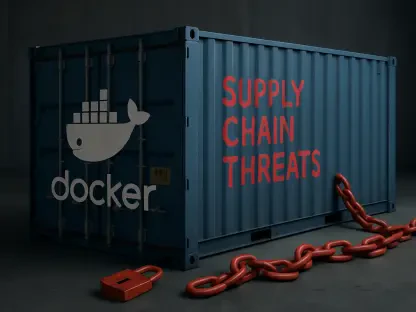In a world where data drives decisions, enterprises are racing against time to harness artificial intelligence (AI) that doesn’t just mimic generic solutions but truly understands their unique needs. Picture a global financial firm struggling to predict market trends with off-the-shelf models that miss critical nuances, or a tech giant aiming to build a culturally relevant chatbot but lacking the resources to train it at scale. These scenarios are no longer hypothetical—they define the urgent challenge facing businesses today. With the stakes higher than ever, how are companies breaking through the barriers of cost and complexity to craft custom AI models?
Why Enterprises Are Building Custom AI Models
The push for custom AI models stems from a pressing need for precision in an increasingly competitive landscape. Businesses, from nimble startups to sprawling conglomerates, recognize that generic, pre-trained large language models often fall short when addressing specific industry demands or cultural contexts. Tailored AI systems offer a distinct edge by embedding deep, company-specific knowledge, enabling outputs that resonate more effectively with target audiences or internal processes.
This trend reflects a broader shift in strategic priorities. Enterprises are no longer content with minor tweaks to existing models through techniques like fine-tuning or retrieval-augmented generation. Instead, many are opting to build from scratch or heavily customize open-source frameworks, driven by the promise of differentiation and long-term value in a data-driven economy. The result is a race to innovate, where the ability to deploy highly specialized AI can redefine market positions.
The Rising Need for Specialized AI Amid Resource Challenges
As the appetite for custom AI grows, so do the hurdles that enterprises must overcome to bring these models to life. The demand for precision—whether in financial forecasting, personalized customer interactions, or region-specific applications—has made customized AI a business imperative. Yet, the reality of limited access to computational power, particularly GPUs, poses a significant barrier, with training often requiring hundreds or thousands of chips running in tandem.
Beyond hardware constraints, the financial burden of such endeavors cannot be understated. Smaller organizations frequently find themselves priced out of the game, while even larger entities grapple with fierce competition for resources and the technical intricacies of managing extensive training operations. These challenges paint a stark picture of a resource-strapped environment where innovation hinges on finding scalable, efficient solutions to bridge the gap.
Vertex AI Training: A Game-Changer for Model Development
Google Cloud’s Vertex AI Training emerges as a pivotal tool in addressing these enterprise pain points, offering a managed service designed to simplify large-scale AI model development. With access to an extensive array of chips, the platform ensures that computational power is no longer a bottleneck, empowering businesses to tackle ambitious projects. Additionally, its managed Slurm environment automates job scheduling, monitors progress, and facilitates recovery through checkpointing, slashing downtime for long-running tasks.
The service’s full-stack capabilities, informed by Google’s experience in training its own Gemini models, streamline the journey from concept to deployment. Real-world applications underscore its impact—AI Singapore leveraged Vertex AI to craft the SEA-LION v4 model tailored for regional needs, while Salesforce’s research teams have accelerated their AI experiments. These examples highlight how the platform transforms a once-daunting process into a manageable, efficient workflow for diverse industries.
Voices from the Field: Expert and Industry Perspectives
Credibility for Vertex AI Training comes not just from its features but from the voices validating its potential. Jaime de Guerre, Senior Director of Product Management at Google Cloud, emphasizes that the service targets enterprises with complex, large-scale training needs, offering a balance of raw power and managed simplicity. This focus resonates with industry trends showing a marked shift toward outsourced, managed AI solutions as companies seek to offload infrastructure burdens.
Early adopters provide compelling evidence of success. Teams that once struggled with hardware failures and scheduling inefficiencies now report higher throughput and reliability, thanks to automated recovery mechanisms. Hypothetically, consider a mid-sized tech firm racing to develop a niche AI tool—by tapping into Vertex AI’s ecosystem, such a company could bypass months of trial and error, focusing instead on refining its unique vision. These stories reflect a growing consensus on the value of integrated training platforms in today’s market.
How Organizations Can Harness Vertex AI Training
For enterprises eager to dive into custom AI development, a structured approach to leveraging Vertex AI Training can make all the difference. The first step involves a candid assessment of whether building a model from the ground up aligns with business objectives, as opposed to fine-tuning existing frameworks. This decision hinges on factors like the uniqueness of data sets or the necessity of meeting stringent regulatory standards that generic models cannot address.
Once the need for customization is clear, identifying specific use cases becomes critical—be it enhancing internal operations or crafting customer-facing solutions that demand deep contextual understanding. Partnering with Google Cloud offers a pathway to scalable resources, ensuring access to cutting-edge tools and automated workflows that mitigate risks like training disruptions. This strategic alignment equips organizations to navigate the complexities of AI development with confidence, turning ambitious goals into tangible outcomes.
Reflecting on a Transformative Journey
Looking back, the emergence of platforms like Vertex AI Training marked a turning point for enterprises wrestling with the demands of custom AI model development. The barriers of cost, resource scarcity, and technical complexity that once loomed large were systematically addressed through managed services that prioritized efficiency and accessibility. Businesses across sectors witnessed newfound possibilities as they deployed specialized models tailored to their unique challenges.
For those standing at the cusp of this evolution, the next steps involve a deliberate focus on aligning AI strategies with long-term objectives. Exploring partnerships with cloud providers offers a practical avenue to scale efforts without the burden of infrastructure management. Moreover, staying attuned to evolving industry needs ensures that investments in custom AI continue to yield competitive advantages, paving the way for sustained innovation in an ever-shifting landscape.









